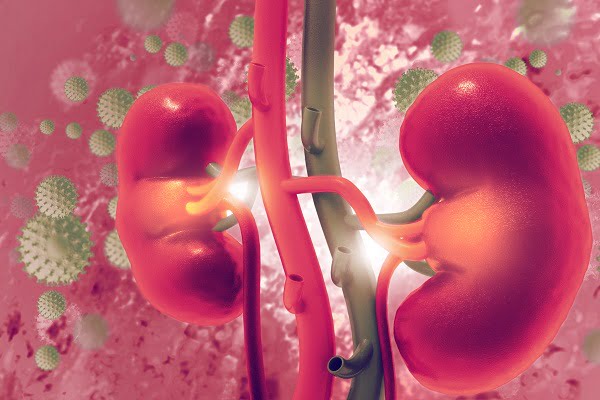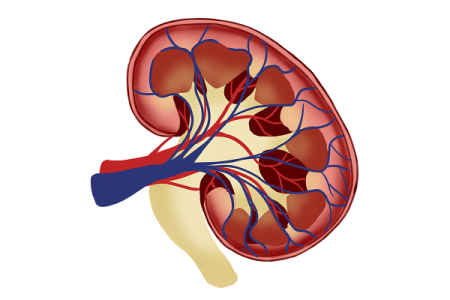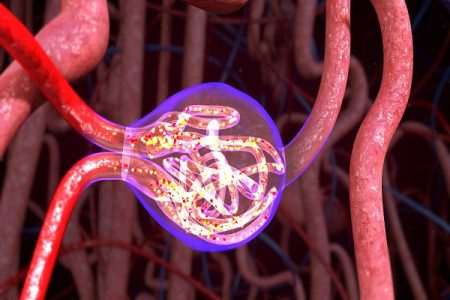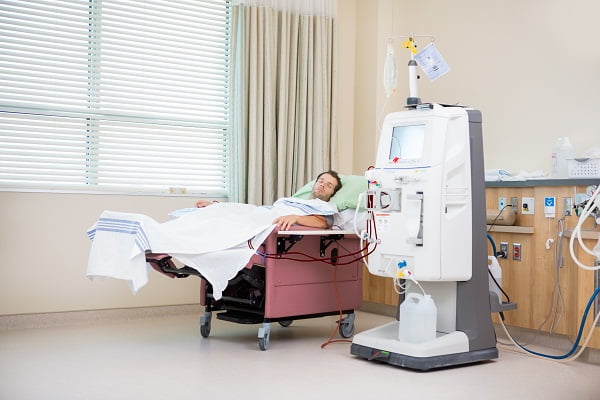What is Chronic Kidney Disease?
- Updated on: Jan 19, 2024
- 4 min Read
- Published on Feb 21, 2021

Overview of Chronic Kidney Disease (CKD)
Chronic kidney disease, also called chronic kidney failure, is defined as the gradual loss of kidney function. Our kidneys filter waste matter and excess fluids from the blood, which are then excreted in the urine. In case of chronic kidney disease, the levels of fluids, electrolytes and waste matters build up in the body. In the initial stages, you may notice no or few signs or symptoms. The disease may not become visible until the kidney function is significantly disturbed. It is diagnosed by blood test and has no physical indications/ symptoms. Longstanding sickness of the kidneys prompts renal failure.
Constant kidney illness, likewise called chronic kidney failure, depicts the slow loss of kidney work. Your kidneys channel squanders and overabundance liquids from your blood, which are then discharged in your urine. At the point when interminable kidney illness achieves a propelled stage, risky levels of liquid, electrolytes and squanders can develop in your body.
CKD can be broadly defined as the presence of:
• Kidney impairment– Pathological abnormalities
• Glomerular Filteration Rate (GFR)– <60 ml/ min for 3 months or longer
In the early phases of interminable kidney ailment, you may have few signs or side effects. Unending kidney infection may not wind up plainly clear until the point when your kidney work is altogether debilitated.
Treatment for constant kidney illness concentrates on moderating the movement of the kidney harm, more often than not by controlling the basic reason. Constant kidney illness can advance to end-arrange kidney disappointment, which is lethal without dialysis or a kidney transplant.
CKD can be recorded as stages in light of the patient’s level of glomerular filtration rate (GFR) which is a measure of the filtering limit of the kidneys. Stage 1 implies the ordinary filtering capacity of the kidney yet outlines those patients that are in danger of dynamic renal sickness, for example, those with proteinuria or hematuria. Stage 2 is utilized for patients with a GFR of 60 to 90 mL for every moment. Stage 3 is utilized for patients with a glomerular filtration rate of 30 to 60 mL for every moment. Stage 4 is for patients with a glomerular filtration rate of 15 to 30 mL for every moment. Stage 5 is for patients with a glomerular filtration rate of under 15 mL for each moment, however, who are not on dialysis. Stage 6 is for patients who have a glomerular filtration rate of under 15 mL for each moment and require dialysis mediation for their renal disappointment.
Interminable kidney disappointment or constant renal disappointment means loss of kidney work that happens over a delayed course of time instead of intense renal disappointment. The loss of renal capacity might be because of past scenes of intense renal disappointment with resulting long haul kidney harm or might be because of infections which cause dynamic decay of the kidney, for example, essential kidney illness (glomerulonephritis) or auxiliary issue, for example, diabetes, hypertension, or auto-resistant clutters. The loss of kidney capacity might be dynamic, however, with treatment of the fundamental reason, the harm can be ended and sometimes the kidney capacity may really move forward. Sadly, numerous patients with ceaseless kidney infection, particularly on the off chance that they achieve Stage 4 or Stage 5 will advance to purpose of end stage renal disease (ESRD) which is the purpose of requiring dialysis or renal transplant. In the event the patient has begun on dialysis, this is synonymous with endless kidney illness Stage 6. Patients with analyzed CKD will probably bite the dust from cardiovascular disease (CVD) than advance to end stage renal malady, so intercessions to limit cardiovascular hazard are essential.
Facts about Chronic Kidney Disease
- The risk of CKD increases for people older than 65 years in age.
- The condition can run in families.
- It’s more likely to develop in African-Americans, Native Americans, and Asian-Americans.
- 10% of the world population is affected by chronic kidney disease, and several millions of people die each year because they do not have access to affordable and timely treatment.
- About 2 million people worldwide receive treatment with dialysis or a kidney transplant to continue their lives. And this number only represents 10% of the people who need the treatment to live.
- Chronic kidney disease is a health crisis throughout the world. In the year 2005, there were about 58 million deaths worldwide. 35 million of them were attributed to chronic disease, according to data from the World Health Organization.
- The disease can be treated. The progression can be slowed down or stopped with early diagnosis and treatment.
FAQs
Can chronic kidney disease be cured completely?
While there is no cure, early detection and comprehensive management can slow the progression and improve the quality of life for individuals with chronic kidney disease.
Is proteinuria always a sign of chronic kidney disease?
Proteinuria, or excess protein in urine, is a common marker, but it doesn't always indicate CKD. It's crucial to investigate the underlying causes through medical assessment.
Can children develop chronic kidney disease?
Yes, children can develop CKD due to congenital conditions or acquired diseases. Pediatric nephrologists play a crucial role in managing kidney issues in children.
How does diabetes contribute to chronic kidney disease?
Diabetes is a major risk factor for CKD. Elevated blood sugar levels can damage the kidneys over time, emphasizing the importance of diabetes management in kidney health.
Is it safe to take over-the-counter pain relievers with chronic kidney disease?
Some pain relievers can be harmful, especially non-steroidal anti-inflammatory drugs (NSAIDs). Consultation with a healthcare professional is essential for choosing safe alternatives.












